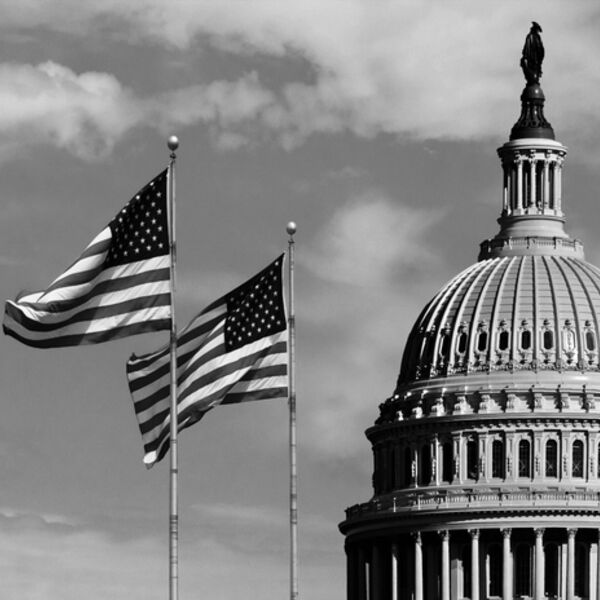
NASTAD Condemns Proposed Cuts to HIV and Hepatitis Programs Outlined in FY2026 Discretionary Budget Request
On May 2, the White House released its Fiscal Year 2026 (FY2026) Discretionary Budget Request, commonly referred to as the “skinny budget.” Like previous years, this document outlines broad funding priorities but offers few specifics on individual programs. A full budget request is expected later this spring. Still, several proposed consolidations and funding reductions raise significant concerns for HIV and hepatitis public health programs.
Key proposals include:
- CDC Program Consolidation and Cuts: The budget calls for combining CDC funding for infectious disease and drug user health programs—including viral hepatitis, sexually transmitted infections (STIs), and tuberculosis (TB)—into a single $300 million grant. This represents a $77 million cut from FY2024 levels, with no details provided on how funds would be distributed across disease areas.
- HRSA Ryan White Program Reductions: The request eliminates funding for Ryan White HIV/AIDS Program Part F, which supports education, training, and capacity-building for doctors, nurses, and other health professionals. The $74 million cut would significantly impact workforce development and system-level support efforts.
- Housing Program Consolidation: The Housing Opportunities for Persons with AIDS (HOPWA) program would be merged into a broader Emergency Solutions Grant (ESG) program, which caps housing assistance at two years and shifts the focus to short- and medium-term housing for “homeless and at-risk individuals.” This change threatens long-term housing stability for people living with HIV.
- Ongoing Risks to HIV Prevention and Surveillance Efforts: Although the budget doesn’t explicitly call for eliminating the Ending the HIV Epidemic (EHE) initiative or CDC’s Division of HIV Prevention, proposed CDC cuts and vague language around program eliminations suggest these critical efforts remain at risk.
- Harm Reduction Undermined: The proposal also takes aim at harm reduction programs, framing services like syringe access and safer use supplies as inappropriate uses of federal funding. This language signals a shift away from evidence-based approaches and raises concerns about the future of federal support for harm reduction.
Together, these proposals signal a potential restructuring of the federal HIV response that could disrupt prevention, care, housing, and harm reduction services nationwide. While the skinny budget is not legally binding, it sets a policy direction that will shape negotiations with Congress in the months ahead.
Any cuts to HIV prevention and surveillance funding would significantly damage the ability of state and local health departments to combat the HIV epidemic in their jurisdictions. Health departments are the cornerstone implementers of HIV prevention, coordinating federal, state, and local public health programs and policies. Their leadership is paramount to achieving national goals to reduce new HIV diagnoses and improve outcomes for people living with and vulnerable to HIV.
These potential cuts would come at a time when, with increased and sustained investment in HIV prevention and care programs, an end to the HIV epidemic is achievable. The implementation of high-impact prevention strategies—including expanded HIV testing, pre-exposure prophylaxis (PrEP) services, post-exposure prophylaxis (PEP) and treatment as prevention (TasP)—has contributed to significant successes. From 2017 to 2022, new HIV diagnoses declined by 12% nationally, with a 30% decrease in diagnoses among individuals aged 13 to 24. Despite this progress, disparities persist across age groups and regions, underscoring the continued need for targeted investments.
Geographic disparities are especially significant. The Southern U.S. continues to experience a disproportionate burden, accounting for over half (52%) of all new HIV diagnoses, despite comprising about 38% of the U.S. population. Rural communities face additional barriers, including fewer healthcare providers, limited access to HIV services, and challenges reaching individuals with prevention resources. Urban centers, while often having greater resources, continue to report some of the highest HIV case counts, necessitating ongoing, coordinated responses across all types of communities.
Federally funded HIV programs have a positive economic impact across the nation. Between 2012 and 2022, approximately 27,900 new HIV transmissions were prevented which saved over an estimated $15 billion in lifetime medical costs. While cases averted provide cost savings, approximately 31,800 new HIV transmissions took place in the U.S. in 2022, leading to lifetime treatment costs of $15.9 billion just for those new cases. These are costs that our economy can no longer afford. Yet the 1.2 million people in the U.S. who are already living with HIV, who reach an undetectable viral load, can live long, productive lives in the American workforce and as thriving members of their communities. Investing in the health of people living with HIV and in preventing new transmissions would generate significant savings and potential growth for our economy.
NASTAD strongly opposes the proposed changes outlined in the skinny budget. We will continue to advocate for strong federal investments in HIV, hepatitis, STI, and harm reduction programs and ensure these services are not weakened through funding cuts or structural changes.